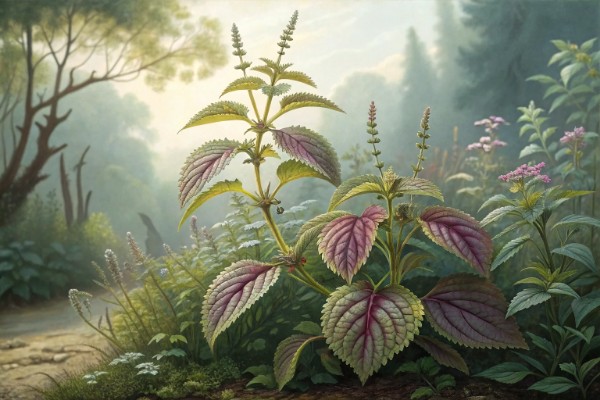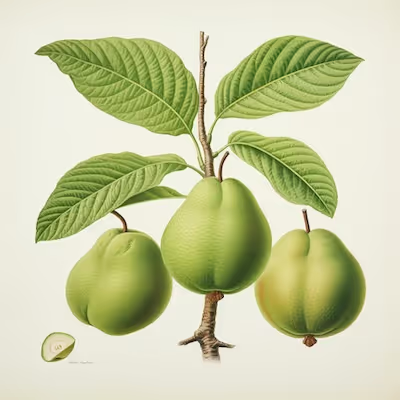Growing Celery: How to Plant, Grow, and Harvest Crisp Stalks

Growing Celery
Growing celery starts with timing—begin planting indoors 10–12 weeks before the final frost date. Celery seeds need direct sunlight, warmth, and moist soil to sprout properly, so sprinkle seeds lightly atop soil mixes without burying. Transplant seedlings outside once they're 4 inches tall, choosing fertile beds with rich, moisture-retentive soil to ensure thriving stalks. Follow along to discover exactly how to cultivate crisp, flavorful celery in your backyard garden.
Growing Celery: how I stopped raising bitter, stringy stalks
I used to grow celery that chewed like twine and tasted like aspirin until I treated it like what it is, a marsh lover with a long fuse. Growing Celery clicks when you lock in cool air, rich soil, and water that arrives like a heartbeat, never skipping.
Seed to seedling: the long runway
Sow 10 to 12 weeks before your last frost, since celery takes its time, often 120 to 140 days to harvest from sowing. Press seed on the surface because it needs light to germinate, then keep 70 to 75 F or 21 to 24 C and evenly moist for 10 to 21 days.
I run lights 14 to 16 hours and drop temps to 60 to 65 F or 16 to 18 C after sprout to keep plants sturdy. A fine mist or bottom watering avoids damping off, and I feed half-strength weekly once the first true leaves show.
Potting up and hardening
Transplant to cell packs once roots knit the mix, and keep growth steady without letting seedlings dry out. Harden off 7 to 10 days in bright shade, then full sun, while cutting back water slightly to toughen the cuticle.
Transplant timing and spacing
Set plants out after danger of frost once soil hits 50 F or 10 C and nights stay above 45 F or 7 C. Space 8 to 10 inches or 20 to 25 cm apart in rows 24 to 30 inches or 60 to 75 cm, and keep the crown level with the soil so it never buries and rots.
Soil that makes celery sing
Celery thrives in a deep, friable loam with heaps of organic matter, so I fork in 2 to 3 inches or 5 to 8 cm of finished compost and aim for pH 6.2 to 6.8. It is a heavy feeder, so I preplant a balanced fertilizer based on a soil test and then side-dress lightly every 3 to 4 weeks.
If calcium runs low, blackheart can strike the inner ribs, and inconsistent water makes it worse. Gypsum adds calcium without changing pH, but only use boron on verified boron-poor soils because excess will burn plants.
Water: the nonnegotiable
Give 1 to 1.5 inches or 25 to 38 mm of water per week, and in heat push to 2 inches or 50 mm, always consistent. Drip lines under 2 to 3 inches or 5 to 8 cm of mulch keep leaves dry and soil cool, which pays in sweetness and snap.
"Consistent moisture produces the most tender stalks." University of Minnesota Extension
Temperature, stress, and bolting
Best growth lands at 60 to 70 F or 16 to 21 C, with stress rising fast above 80 F or 27 C. A chilly snap near 40 F or 4 C for a week can trigger bolting in transplants, so I use row cover on cold nights and shade cloth when highs hit the 90s F or 32 C.
Blanching: milder ribs on cue
Blanching blocks light to produce paler, milder stalks, though green celery carries stronger flavor for stocks and braises. Start 10 to 14 days before harvest by tying the plant loosely and using one of these methods.
- Paper wrap or cardboard collar secured around the stalks
- Opaque nursery pots with bottoms removed, slipped over crowns
- Trench growing: plant in a shallow trench and pull soil in gradually
- Self-blanching varieties for lower-effort gardens
My feeding rhythm that avoids hollow stalks
I start rich, then spoon-feed: a light weekly fertigation with fish emulsion or a balanced soluble keeps growth even. Keep potassium and calcium adequate to prevent hollow ribs and blackheart, and never let the root zone swing from dry to soaked.
Pests and diseases I actually see
- Aphids: rinse with water, use insecticidal soap, and invite lacewings and hoverflies.
- Leafminers: remove mined leaves, use row cover early, and rotate out of Apiaceae beds.
- Slugs and snails: beer traps, iron phosphate bait, and sharp mulch like grit.
- Cutworms: collars at transplant and keep beds weed-free.
- Early blight and leaf spot: wider spacing, drip irrigation, morning sun, and copper only as last resort.
- Damping off in starts: sterile mix, airflow, and careful watering.
Quick fixes to common celery headaches
- Bitter flavor: add water, mulch, and light shade during heat; blanch before harvest for gentler taste.
- Stringy stalks: harvest younger, choose tender cultivars like Tango, and keep growth steady.
- Hollow ribs: prevent drought swings, maintain potassium, and avoid heavy late nitrogen.
- Blackheart: keep calcium available and moisture even; foliar calcium helps during hot spells.
- Bolting: protect transplants from cold and avoid setting out undersized, stressed plants.
Harvest, cooling, and storage
Harvest when stalks are full-sized and tight, often 10 to 12 weeks from transplant, then cut the whole plant at the base or take outer ribs first. Pick in the morning for crispness, dunk in cold water, and store at 32 to 36 F or 0 to 2 C with high humidity.
Home fridges hold quality 2 to 3 weeks if you wrap stalks in a damp towel or perforated bag. Keep away from apples and pears since ethylene speeds pithiness and off-flavors.
"For best quality, store celery near 32 F at very high humidity." UC Davis Postharvest Technology Center and USDA Handbook 66
Top celery varieties I trust
- Tango: tender, sweet, and forgiving of uneven weather.
- Ventura: sturdy ribs and field reliability for home beds.
- Tall Utah 52-70R: classic flavor and big yields with good fertility.
- Conquistador: better heat tolerance in warm summers.
- Golden Self-Blanching: compact plants that blanch with less fuss.
- Giant Red: striking color and herbaceous bite for salads and braises.
- Leaf celery or cutting celery: intense leaf flavor for soups, minimal space needs.
Containers and small spaces
Use a deep trough or a 5 gallon or 20 liter container per plant with a moisture-retentive mix and a reservoir if possible. Feed lightly every 7 to 10 days and mulch even in pots; wind dries celery faster than you think.
Companions and crop rotation
I interplant celery with lettuce, scallions, and basil to shade soil and share space efficiently. Rotate away from carrots, parsley, and parsnips for 3 to 4 years to dodge Apiaceae disease buildup.
From kitchen scrap to greens
You can regrow a grocery-store base in water to harvest leaves, which taste bright and minerally. Full market-style stalks rarely return, so I treat this as a windowsill herb project, not a main crop.
Climate playbook
- Cool-summer regions: start indoors late winter, plant out late spring, harvest late summer to fall.
- Hot-summer regions: sow late summer, transplant for a fall to winter crop when days cool.
- UK timing: sow under cover February to April, plant May to June, harvest September to November (RHS guidance).
Gear and inputs that actually help
- Primed or pelleted seed for even germination and easier sowing.
- Insect mesh or light row cover to block aphids and leafminers from day one.
- Drip lines with a simple timer to keep moisture steady.
- Shade cloth at 30 percent for heat spikes that cause bitterness.
- Calcium sources like gypsum if soil tests suggest low levels.
- Mulches that hold water: shredded leaves, fine bark, or clean straw at 2 to 3 inches or 5 to 8 cm.
Flavor notes from the cutting board
Celery grown slow and cool tastes like cold rain and clean iron, the kind cooks hunt for when a stock needs backbone. I blanch lightly for salads and keep ribs green for soffritto, which appreciates that herbal punch.
Science and extension guidance I rely on
"Celery thrives at 60 to 70 F with uniform soil moisture and high soil organic matter." University of Minnesota Extension
"Cold exposure at the transplant stage triggers bolting in celery." UC ANR Vegetable Research and Information Center
"Maintain very high relative humidity to preserve crispness and prevent pithiness." UC Davis Postharvest Technology Center
Troubleshooting snapshot
- Purple-tinged leaves can signal phosphorus stress from cold soil; wait for warming or use a light, balanced feed.
- Slow seedlings respond to a gentle root-zone warm-up and brighter light rather than more fertilizer.
- Faint celery aroma in the bed means water stress or old seed; buy fresh seed each season for best vigor.
Celery cousins and clever swaps
If your heat window feels unforgiving, try cutting celery for leaves or celeriac for bulbs that shrug off tougher weather. Celeriac cultivars like Monarch and Prinz give that same savory perfume with fewer demands on temperature and water.
Cheatsheet: Crisp, Homegrown Celery Made Easy
🌱 Start Seeds Indoors
- Start 10–12 weeks before final frost—celery needs long, cool growth (60–70°F / 15–21°C).
- Sow seeds on soil surface; press, don't cover—needs light to germinate.
- Keep moist; seeds germinate in 14–21 days.
- Sow indoors; surface-plant for light exposure
- Maintain 60–70°F / 15–21°C
🌤️ Transplant & Space Correctly
- Harden off seedlings at 5–6 inches (13–15cm).
- Transplant after frost, 8–10 inches (20–25cm) between plants.
- Choose rich, moisture-retentive soil (pH 6–7).
- Harden off at 5–6 inches
- Transplant 8–10 inches apart in rows
💧 Water & Feed Generously
- Keep soil consistently moist—shallow roots dry fast.
- Mulch well to retain water.
- Fertilize every 2–3 weeks with balanced liquid feed.
- Maintain steady soil moisture
- Apply mulch and liquid fertilizer regularly
🛡️ Blanch for Tender Stalks
- Wrap stalk bases with cardboard or newspaper 2–3 weeks before harvest (optional).
- Blanching yields pale, sweeter stalks; skip for stronger flavor and maximum nutrition.
- Wrap stalks to blanch if milder taste preferred
✂️ Harvest at Peak Crunch
- Harvest outer stalks first at 8–10 inches (20–25cm) tall (100–130 days).
- Cut entire plant at soil level if preferred—best flavor after cool nights.
- Use fresh or store, unwashed, in fridge up to 2 weeks.
- Cut stalks as needed or harvest plant whole
🧰 Tools and Products You'll Need
- Seed trays, quality celery seeds
- Potting soil
- High-phosphorus fertilizer
- Mulch (straw or leaf mold)
- Sharp garden shears
- Blanching material: cardboard or newspaper
🥗 Nutrition & Self-Sufficiency
Low calorie, rich in vitamin K, C, folate, potassium. One cup: 37% daily vitamin K. Just six plants supply all summer salads and juicing needs.
🌍 Stats Worth Knowing
- Each plant yields up to 12 crisp stalks.
- Celery tops US “Dirty Dozen” for pesticide use—homegrown is chemical free.
Frequently Asked Questions About Growing Celery
What is the ideal location to plant celery in my garden?
Celery thrives best in an area receiving full sun, though it tolerates partial shade during warmer afternoons. Select a spot with rich, moisture-retentive soil and adequate drainage to encourage healthy growth.
How should celery seeds be started indoors?
Start celery seeds indoors about 8 to 10 weeks before your last expected frost date. Lightly sprinkle the tiny seeds over seed-starting mix and gently press them into the soil surface without covering them. Maintain temperatures between 70°F–75°F (21°C–24°C) and evenly moist conditions to ensure germination.
When and how should celery seedlings be transplanted outdoors?
Transplant celery seedlings outdoors after all danger of frost has passed and nighttime temperatures consistently remain above 45°F (7°C). Space plants 8–12 inches (20–30 cm) apart, water regularly, and apply organic mulch to maintain consistent moisture.
How frequently should celery plants be watered?
Celery plants require consistent watering to thrive, approximately 1 to 1.5 inches (2.5–4 cm) per week, aiming to keep the soil consistently moist but not waterlogged. Regular watering prevents tough, stringy stalks and promotes tender, flavorful growth.
What nutrients does celery require to grow properly?
Celery significantly benefits from nutrient-rich soils with adequate nitrogen, potassium, and phosphorus. Apply a balanced organic fertilizer or incorporate aged compost into the garden bed prior to planting, and supplement with additional fertilizer every four to six weeks as the plants mature.
Are there companion plants that enhance celery growth?
Companion planting aids celery growth and pest prevention; beneficial companions include leeks, onions, garlic, beans, cabbage, tomatoes, and marigolds. Avoid planting celery near corn or potatoes since they compete for nutrients and water.
When and how should celery be harvested?
Celery reaches maturity anywhere between 85–120 days after transplanting. Harvest stalks individually from the outside or cut whole bunches at the base when stalks reach 8–12 inches (20–30 cm) tall. Picking younger stalks ensures superior taste and tenderness.
Growing celery rewards patience and attention. Start with rich soil, steady moisture, and a little shade in the hottest stretch. Thin seedlings, feed them well, and mulch to lock in moisture. Crisp stalks come from steady care—don’t let the soil dry out. Harvest when the stalks feel firm and snap with a clean break. If you’re curious about other bold, aromatic plants with celery-like flavor, check out lovage—it’s an old-school favorite that deserves a spot in any serious garden. In the end, the reward is simple: homegrown celery that snaps, crunches, and tastes like nothing you’ll find at the grocery store.



